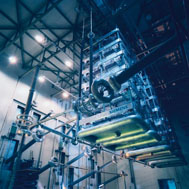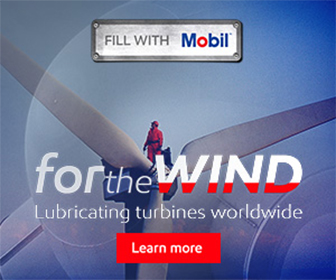Unlocking the Best Wind Resources in the Country
 Transmission & The Rock Island Clean Line
Transmission & The Rock Island Clean Line
Transmitting wind energy to where it’s needed most has long been an uphill toil for wind power developers. But, in recent years, it has also become an opportunity to unlock the country’s best wind resources, while discovering the potential and power of wind as a long-term, viable renewable energy source.
Many in the wind business believe building additional transmission lines are vital to the development of an industry that can help the country meet its new alternative energy goals. Today, a number of proposed lines across the country are sending a resounding message that the grid needs to be updated in an efficient and responsible manner.
One such project is The Rock Island Clean Line, a transmission line capable of transmitting up to 4,000 megawatts of new renewable energy from Iowa, Nebraska, South Dakota, and Minnesota, to communities in Illinois and states farther east. The $1.7 billion project will consist of an approximately 500-mile overhead, high-voltage direct-current (HVDC) transmission line that is being developed in Iowa.
The Rock Island Clean Line is expected to attract wind farm developers to the region and generate millions of dollars in state and local tax revenues, while addressing the nation’s ongoing efforts to increase energy security. It will also deliver enough clean energy to meet the needs of more than 1.4 million American homes, and allow for approximately $7 billion investments in new renewable projects.
A recent study by Midwest grid operators shows wind energy has the potential to provide 20% of the energy to the power grid that serves most of eastern North America. The study also determined that the cost for building transmission lines would be about $80 billion. Of course, the construction of these lines is not an easy task, particularly in the face of some resistance. It’s a lengthy and complex process, but one that should pay off in the end.
Transmission challenges
Transmission is one of the biggest issues facing the wind industry, and Iowa is just one of the states experiencing challenges navigating the transmission maze. Wind energy advocates continue to work to debunk misinformation on the negatives associated with transmission lines, including the concern many consumers have that they’ll be forced to pay for the new lines through their local power bills, even though power may be going elsewhere.
However, the upside is that these lines are attempting to unlock many of the country’s best wind resources, where wind power can be produced at an extremely low cost—a cost that’s competitive with any other form of power generation. This is an issue The Rock Island Clean Line could face, even though it will ultimately allow Iowa to sell wind power to other states and reduce its own costs.
Environmental concerns
Those involved with the Rock Island Clean Line are well aware of the environmental concerns. “It would be disingenuous of us to build a line through environmentally protected areas,” said Cary Kottler, project development manager for Clean Line Energy.
According to a recent study by Ventyx, the project will actually create a number of environmental benefits. The study focused on the emissions and water use reductions that long-distance transmission lines make possible through the creation of new wind power. Wind energy generation allows other generators to run less and burn less fuel, eliminating the need for the equivalent amount of energy derived from fossil fuels; thereby, reducing pollution and water use.
The Rock Island Clean Line will make possible more than 4,000 megawatts of new clean wind energy generation. The results of the Ventyx study show that this will reduce carbon dioxide pollution by more than 10 million tons, which is equivalent to removing more than 1.9 million cars from the road. In addition, Ventyx determined that the project will reduce sulfur dioxide and nitrogen oxide pollutants (precursors to smog and acid rain) by approximately 11,300 tons and 6,900 tons, respectively.
Many wind energy backers across the country believe the wind energy industry would benefit from transmission projects. Case in point: the lack of long-distance transmission lines is a key factor limiting the demand for new wind projects in the Midwest.
Gaining approval
The Rock Island Clean Line is expected to be in operation by 2016. So far, draft corridors (3- to 10-mile wide study areas) have been developed where the line could potentially be routed, and extensive public outreach with local residents and governments has begun. The ultimate route for the line will require regulatory approvals from the Illinois Commerce Commission, the Iowa Utilities Board, and various other federal and state government bodies.
Various utilities are also working together on a proposed 8,000-mile transmission line that would deliver wind energy from the Dakotas to larger population centers in the eastern part of the country. The success of wind energy in the Midwest is highly dependent on electric reliability of the transmission grid.
Delivering wind energy to where it’s needed most is more easily conceptualized than done, but strides are being made. With each new development, the industry is one step closer to realizing the vision of transmission lines in order to unlock the country’s best wind resources and deliver clean power to America’s electricity mix.
Brian Crowe is a project manager at the Iowa Department of Economic Development.
Iowa Department of Economic Developmentwww.iowa.gov
Author: Brian Crowe
Volume: September/October 2011









